The ACG-1 Belgium medium cavalry Tank (AMC35)
This AMC 35 French WW2 medium cavalry Tank ACG-1 can be found at the French Tank Museum in Saumur in the Loire Valley. The AMC 35 tank was used by the Belgium Army in 1940 against the German Invasion. The Belgium army designated them ACG-1
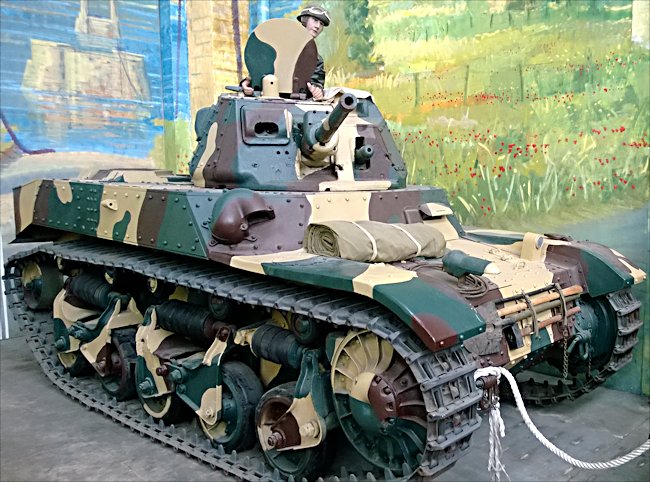
As part of the modernization project of The Belgium armed forces, the Belgian Government decided on 13 September 1935 to purchasing some tanks. Plans were made for the purchase of 25 Renault A.M.C. Model 1935 ACG1 French tanks. They would be split between two squadrons of eight vehicles in each of the two cavalry divisions (plus two reserve vehicles) and a formation of six vehicles for the Ardennes hunters (plus one replacement vehicle)
These AMC 35 ACG1 tanks would be armed with a APX2B FRC 47 mm gun and a Hotchkiss 7.65 mm machine gun. The crew would consist of a tank commander, a gunner and a driver
After a lot of delays the first tank with vehicle number 803 was delivered to the Belgium army in June 1937. The vehicle was much heavier than originally specified and the performance of the Renault tank suffered greatly during summer exercises in the undulating terrain of the Belgium Ardennes. Under political pressure from the Belgium neutrality faction in the government the contract was cancelled. Renault received a small compensation fee and the remaining funds were assigned to the production of the lighter cheaper British Carden-Loyd T13 armoured personnel carriers.
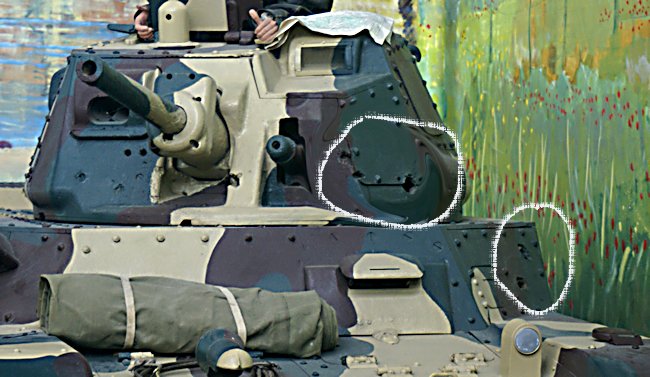
However, on 21 April 1938, the Belgium Army signed a new agreement and paid for the supply of ten tanks. This included the cost of the previously delivered tank number 803. Production was resumed in November 1938 and over the course of the next year, the remaining nine vehicles were delivered. AMC 35 tanks number 806, 814 and 817 arrived on the 30th March 1939, tanks numbered 807, 823 and 829 in May 1939 and tanks numbered 831, 831 and 833 on 7 August 1939. In August 803 was also sent back to Renault for a revamp. They were officially called 'armored cars' instead of 'tanks' in all official documents so as not to provoke the Germans.
The men of the new tank squadron were entered on the books on 1st September 1939 at Watermael-Boitsfort but soon moved to Ghent to pick up its vehicles and to start training. The Director of the seaport of Ghent offered the Army access to a nearby large area of wasteland. It was soon converted into a tank training ground.
At the end of October the tank crews and their vehicles were moved to Camp Beverlo. They under went tactical exercises with the 5th Infantry Division following the new military guidelines written by Belgium Captain Hullebroeck for the cooperation of tanks with the infantry.
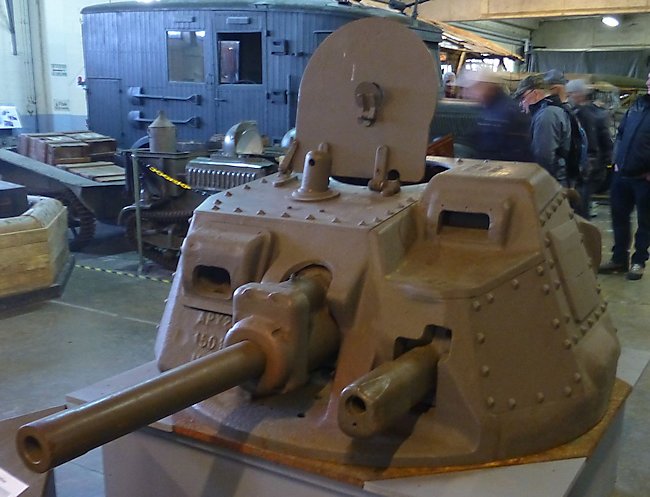
This is the only surviving Belgium Army ACG1 tank turret. It was part of a bunker complex protecting the port of Zeebrugge used in May 1940. This turret is on display in Bastogne Barracks. (Photo - John Osselaer)
The tank Squadron's organisation
On 24th December 1939 the squadron moved to Brussels. The unit was organised into two platoons of four tanks each time. The last two vehicles were are held in reserve. The Belgium tank crews were drawn from two different cavelry regiments, the 2nd Lancers Regiment and the 1st Guides.
Each regiment provides four tank crews plus part of the platoon support staff. Most of these cavalrymen belonged to the class of 1935 and had been trained on horseback not tanks. The men of the 1st Guides were under the command of Lieutenant Gailly and had the following tanks in their platoon 807 (Lt H. Gailly), 817 (Wm Plissart), 829 (Adjt K.R.OLt.Pulings) and 832 (Wm Frankinet). The tank crews of the 2nd Lancers were under command of Lieutenant Schreiber and were equipped with AMC 35 tanks number 803 (Wm M. Verboven), 814 (OLt W. Schreiber), 831 (Wm Dumortier) and 833 (Wm Dumoulin).
The two reserve vehicles, 806 and 823, had various defects. Captain Hullebroeck made a decision to dismantle the tanks and use them for spare parts.
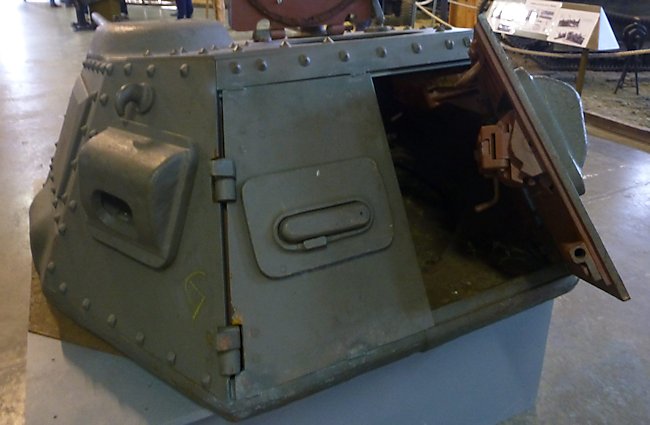
Rear view of the Belgium Army ACG1 tank turret on display in Bastogne Barracks. (Photo - John Osselaer)
The 'Phoney War' is over
When the Army received the notification to be ready for war following the German invasion of Luxembourg and Holland in 10th May 1940, the squadron moved to the Walemstraat depot in Schaerbeek, near Brussels. The tank crews were told to hold themselves ready to intervene in case of air landings. They start patrolling in and around the capital looking for paratroops.
On 16th May 1940 the Squadron were ordered to redeploy to Humbeek. They were now under the operational command of the 1st Light Regiment (1LR). The tanks were positioned to defend the canal and bridges between Willebroek and Vilvoorde. Their task was to act as a mobile anti-tank weapons.
First Blood
The Belgium ACG-1 tanks first see action on 17th May 1940. The first enemy scouts were spotted near the rail and road bridge of Kapelle-op-den-Bos. The ACG-1 tanks commanded by Adjutant Pullings in tank number 829 and Adjutant W Dumoulin in tank number 833 open fire.
Tank 829 is hit at the front by an armour piercing shell from a German PAK37 anti-tank gun. Tank driver Camille is killed and Gunner Lutin is injured. After giving first aid to the Gunner the tank commander Pullings climbed back into the turret and continued to fire on the Germans alone. However, the situation soon became untenable. The remaining tank crew had to abandon the tank. Pulling continued to fire at the enemy. This time from a nearby house, using a machine gun fighting along side with a sergeant of the border cycling regiment. Pulling eventually escaped in a side car of a border police motorbike.
The Retreat
Tank 833, under the command of Adjutant W Dumoulin, remained in action until the general retreat order was given at 9pm. He constantly maneuvered the tank to enable the gunner to fire on targets without being hit. The rest of the Tank Squadron is used on the 17th May 1940 as part of the rear guard to protect the retreat of the Belgium infantry towards Dendermonde. They cause some losses amongst the attacking Germans.
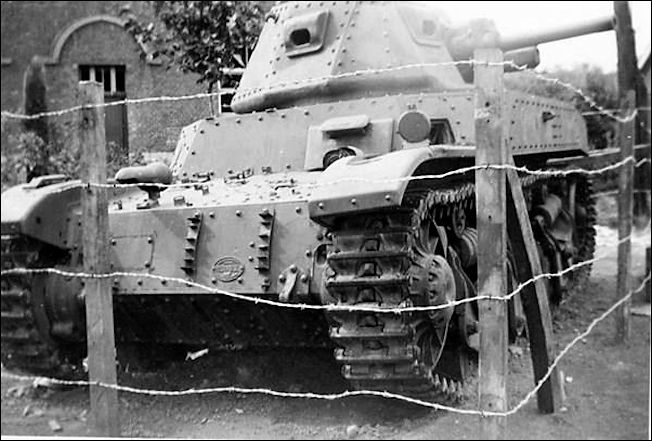
Belgium Army ACG-1 tank 829 knocked out on 17th May 1940 at Kapelle-op-den-Bos
On the 18th May 1940 part of the ACG-1 tank Squadron arrives in Dendermonde just after dawn. It consists of Captain Hullebroeck and his staff and three tanks of Lieutenant Schreiber 2nd Lancer's platoon. Hullebroeck wants to remain on the spot and fight, but is ordered to take what remains of his Squadron to Lotenhulle, to the west of Ghent. They arrive at 4pm.
Lieutenant Gailly's remaining three tanks of the 1st Guides Platoon disengage with the enemy and follow orders to regroup near Dendermonde. They manage to cross the canal bridge just before the engineers blow it up. The Lieutenant visits the headquarters of the 6th Infantry Division to find out where Captain Hullebroeck and the other Squadron tanks are located, but no one can help him. Gailly's platoon of three tanks drive to the Cavalry HQ command post at Destelbergen. They arrive at 6pm and are ordered to support the 2nd Cavalry Division at Tereken near Sint-Niklaas on the road between Antwerp and Ghent. The two platoons are now separated and are many miles apart.
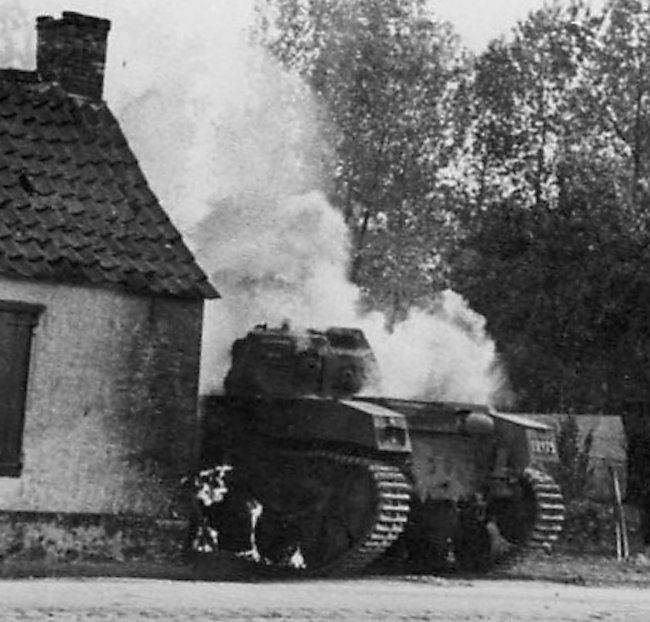
Knocked out Belgium Army ACG-1 tank May 1940
19th May 1940 Tank Losses
Captain Hullebroecks platoon is sent to defend the Dender River and they are now under the overall command of the 1st Division Ardennes Jagers. In the east Lieutenant Gailly's tanks are on the left bank of the Scheldt River to try and stop the German advance near Antwerp. At 11am, along with the infantry and some 2nd Cavalry Division Armoured cars, they are sent forward towards Zwijndrecht. The tanks are not fitted with radios so they are assigned soldiers on bikes to facilitate communication.
The advance takes them via Kettermuit and the river road as they prepare to head towards Kruibeke on the outskirts of Antwerp. En route, Tank 833 by commanded by W Denis ran out of fuel. As the two remaining tanks enter the village, around 6pm along Burchtstraat, they make contact with the advance units of the German Army.
Tank 807 commanded by Lieutenant Gailly is in the front, followed about 100 metres behind by tank 832 commanded by W Frankinet. The lead tank is hit by an armour piercing shell from a German PAK37 anti-tank gun. Tank driver Sansen is wounded but manages to get out of the tank. Lieutenant Gailly is burnt but manages to climb out of his turret. The Gunner does not make it. The two survivors crawl back to Belgium Army lines through houses, fields and canals. The platoon is now temporarily down to one tank.
That night the 2nd Cavalry Division then retreated west to Moervaart, using a water inlet to the Ghent-Terneuzen Canal as a defensive moat. They broke contact with the enemy at around 9pm near the town of Zwijndrecht. Meanwhile supplies arrived and the crew managed to refuel tank 833 so it could join tank number 832.
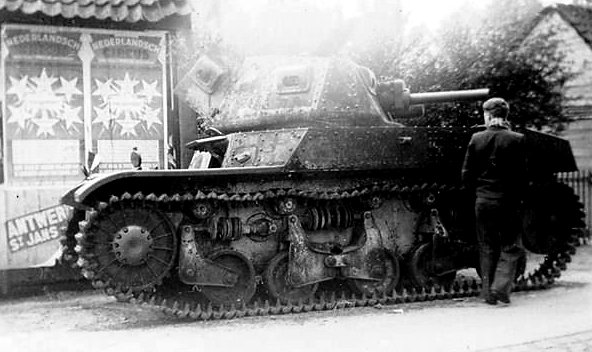
Knocked out Belgium Army ACG-1 tank number 807 19th May 1940
20th - 27th May 1940
On the 20th the Germans continued with their advance and reached the eastern edge of the Ghent Bridgehead. There was fierce fighting near the riverside village of Kwatrecht, south west of Ghent. That night the Lieutenant Schreiber's tanks are called to advance towards the fighting at Kwatrecht.
In the morning of the 21st May 1940 tank 814 commanded by Lieutenant Schreiber is hit and the whole crew dies. Tank 803 is also disabled by a number of hits from German PAK37 anti-tank guns. The tank commander, W Verboven and gunner Delens are instantly killed. The driver Goossens manages to survive the incident. On the 22nd May 1940 the remaining tanks are withdrawn behind the River Leie at Zwevezele for a short rest.
At 12 noon on 24th May 1940 the remaining three tanks are ordered to advance to Moorslede along with other armoured vehicles and infantry units, as the Germans advance in France had now reached the coast and threatened the south of Belgium. By dawn of the 25th they had reached the town of Sint-Eloois-Winkel where they are used for patrol work.
On the 26th the tanks are fired upon by a Belgium 75mm Cannon as they are mistaken for German panzers. After that close call the ACG-1 tanks continue patrol work but fly the Belgium flag to prevent anymore friend ly fire incidents.
The Squadron tanks are reienforced during the night with some Carden Loyd T13 B2 Tanks. They are dispatched to different defensive locations to keep an eye out for German infultration. Tank number 832 along with some T13s is sent to patrol the area between moorslede and Tuimelaars. Tank 833 and his T13s are sent to Koekuithoek and tank 833 along with his allotted T13s are sent to look after the area around Vierkavenhoek. They are part of a mobile reserve.
Surrender - 28th May 1940
On the last day of the Battle for Belgium the tanks are pulled back to Roeselare near Hooglede. Only two of the ACG-1 tanks are operational. German anti tank guns knocked out a number of the T13 tanks. Others had to be abandoned because of lack of fuel. When the surrender order was received the remains of the Squadron was told to stop fighting and await further orders.
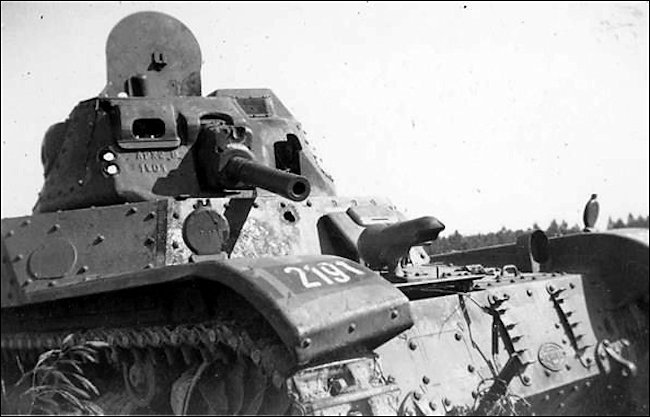
Knocked out Belgium Army ACG-1 tank number 807 19th May 1940
WW2 tank books

